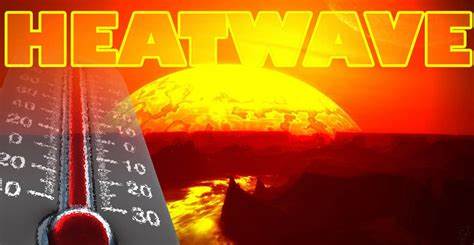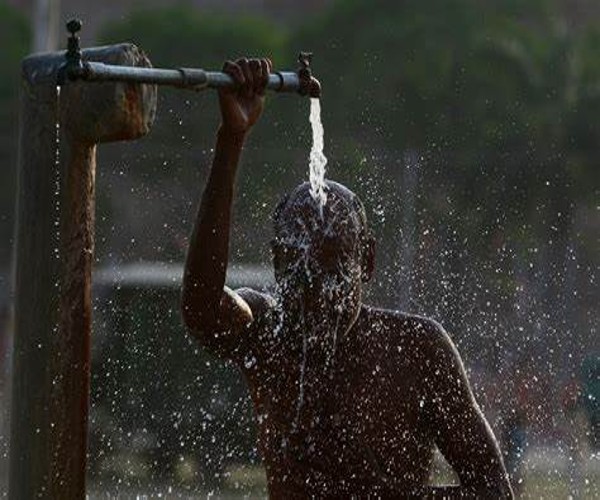
Heatwave
Heatwave, As May 2024 progresses, India finds itself in the throes of one of the most severe heatwaves in its history. The India Meteorological Department (IMD) has reported unprecedented high temperatures across multiple states, signaling a climate crisis exacerbated by global warming.
Unprecedented Temperatures
April 2024 set the stage for the current extreme conditions by becoming the hottest April on record since 1901. The eastern regions, particularly West Bengal and Odisha, experienced their highest April temperatures ever, with mean temperatures reaching 28.12 degrees Celsius. This alarming trend has continued into May, with heatwaves persisting and intensifying across the country.
Affected Regions
The heatwave is affecting a wide swath of India, including Rajasthan, Gujarat, Tamil Nadu, Karnataka, and Delhi. For instance, Delhi has recorded temperatures soaring above 42 degrees Celsius, with no immediate relief in sight. The highest temperatures have been noted in Jharkhand, reaching a scorching 45.1 degrees Celsius.
Human Impact and Health Risks
The relentless heat is not just a matter of discomfort; it poses serious health risks. Reports indicate that nine people have already succumbed to heat-related illnesses. Authorities have issued advisories for staying hydrated, avoiding outdoor activities during peak heat hours, and paying attention to vulnerable populations like the elderly and children.

web stories create by samacharscoop.com
Climate Change and Future Outlook
Experts attribute the increasing frequency and severity of heatwaves in India to climate change. The IMD predicts that heatwave days will be higher than normal by 2-4 days in several regions including interior Odisha, Jharkhand, Bihar, and parts of southern India. This trend is expected to continue, with significant implications for public health, agriculture, and water resources.
Government and Community Response
In response to the escalating situation, some states have suspended in-person classes in schools and issued health warnings. There is also a push for community awareness programs to educate the public on coping strategies during extreme heat conditions.
The impacts of heat waves are far-reaching and multifaceted, affecting human health, the environment, infrastructure, and the economy. Here are the key impacts:
Health
- Heat-Related Illnesses: Increased incidents of heat exhaustion, heat stroke, dehydration, and exacerbation of preexisting conditions like cardiovascular and respiratory diseases.
- Mortality: Higher mortality rates, particularly among vulnerable populations such as the elderly, infants, and those with chronic illnesses.
- Mental Health: Stress and mental health issues due to prolonged high temperatures and discomfort.
Environment
- Wildfires: Higher temperatures and dry conditions increase the risk and intensity of wildfires, leading to loss of vegetation, wildlife, and habitat destruction.
- Water Stress: Increased evaporation rates can lead to lower water levels in rivers, lakes, and reservoirs, affecting water supply for drinking, agriculture, and industry.
- Agriculture: Heat waves can damage crops, reduce yields, and lead to soil degradation, impacting food security.
Infrastructure
- Energy Demand: Higher temperatures increase the demand for air conditioning, putting stress on power grids and potentially leading to blackouts.
- Transportation: Roads, railways, and bridges can suffer from heat-induced damage like buckling and warping, disrupting travel and logistics.
- Buildings: Structures may become less efficient at cooling, increasing operational costs and the need for renovations or upgrades.
Economy
- Productivity: Extreme heat can reduce labor productivity, particularly in outdoor and manual labor sectors like construction and agriculture.
- Healthcare Costs: Increased incidences of heat-related illnesses lead to higher healthcare expenditures.
- Insurance: Rising claims for heat-related damages and health issues can drive up insurance premiums and affect the financial stability of insurers.
Ecosystems
- Biodiversity: High temperatures can lead to habitat loss and stress on wildlife, affecting species diversity and ecosystem balance.
- Marine Life: Increased ocean temperatures can cause coral bleaching and disrupt marine ecosystems.
Social and Community
- Displacement: Severe and prolonged heat waves can lead to temporary or permanent displacement of populations, particularly in regions where conditions become untenable.
- Inequality: Disadvantaged communities often lack the resources to effectively cope with heat waves, exacerbating social inequalities.
Adaptation Strategies
- Urban Planning: Implementing green roofs, increasing urban green spaces, and designing buildings to be more heat-resilient.
- Early Warning Systems: Developing and maintaining systems to alert populations of impending heat waves and provide guidelines for safety.
- Public Awareness: Education campaigns to inform the public about the risks of heat waves and how to protect themselves.
Addressing the impacts of heat waves requires a comprehensive approach, combining immediate adaptation strategies with long-term efforts to mitigate climate change.
Heat waves, periods of excessively hot weather, are becoming more frequent and intense due to climate change. These events can have severe impacts on health, infrastructure, and ecosystems. Key points about heat waves include:
- Definition: A heat wave is typically defined as a period of at least three consecutive days with temperatures significantly above the average for a region. This threshold varies by location and climate norms.
- Causes: Heat waves are primarily caused by high-pressure systems that trap heat in an area. Climate change is exacerbating these conditions by increasing baseline temperatures and altering weather patterns.
- Impacts:
- Health: Heat waves can lead to heat-related illnesses such as heat exhaustion and heat stroke. Vulnerable populations, including the elderly, children, and those with preexisting health conditions, are at higher risk.
- Environment: High temperatures can stress ecosystems, leading to events like forest fires, droughts, and the loss of biodiversity.
- Infrastructure: Prolonged heat can damage infrastructure, such as roads and power lines, and strain energy supplies due to increased use of air conditioning.
- Adaptation and Mitigation: To combat heat waves, cities are adopting measures such as creating green spaces, improving building designs for better heat management, and implementing early warning systems. Mitigating climate change by reducing greenhouse gas emissions is also crucial to prevent worsening heat wave conditions.
- Historical Context: Recent years have seen some of the hottest temperatures on record, with notable heat waves affecting regions across North America, Europe, and Asia. These events highlight the urgent need for adaptive strategies and climate action.
Understanding and addressing the causes and effects of heat waves are essential for protecting public health, preserving ecosystems, and ensuring the resilience of communities in a warming world.
Conclusion
The ongoing heatwave in India serves as a stark reminder of the impacts of global climate change. As temperatures continue to rise, coordinated efforts at local, national, and global levels will be crucial to mitigate the effects and safeguard communities against future climate extremes.
For more detailed updates and safety tips, keep following the latest advisories from the IMD and local health departments. samacharscoop.com





Your writing style makes complex topics seem simple. Thanks!